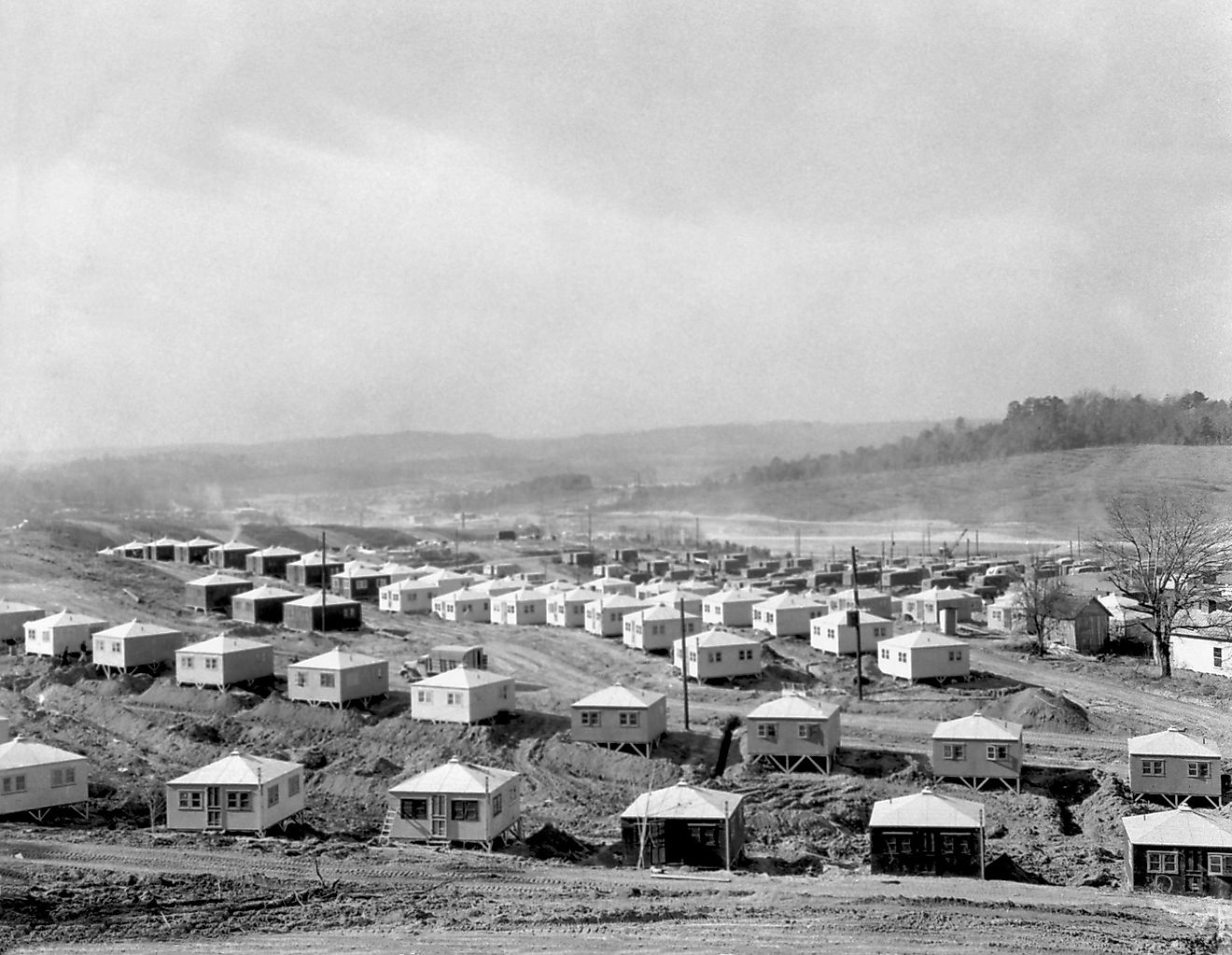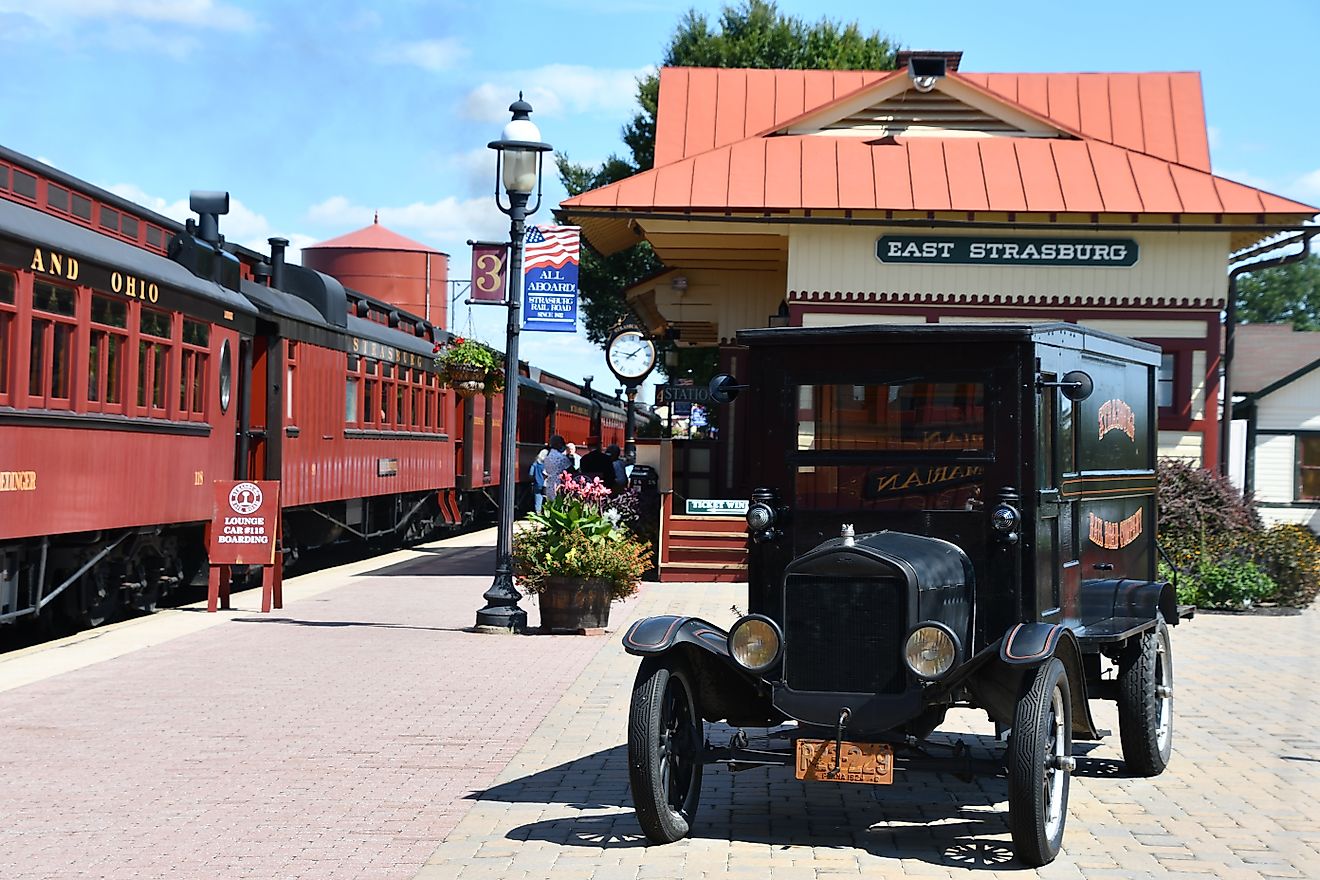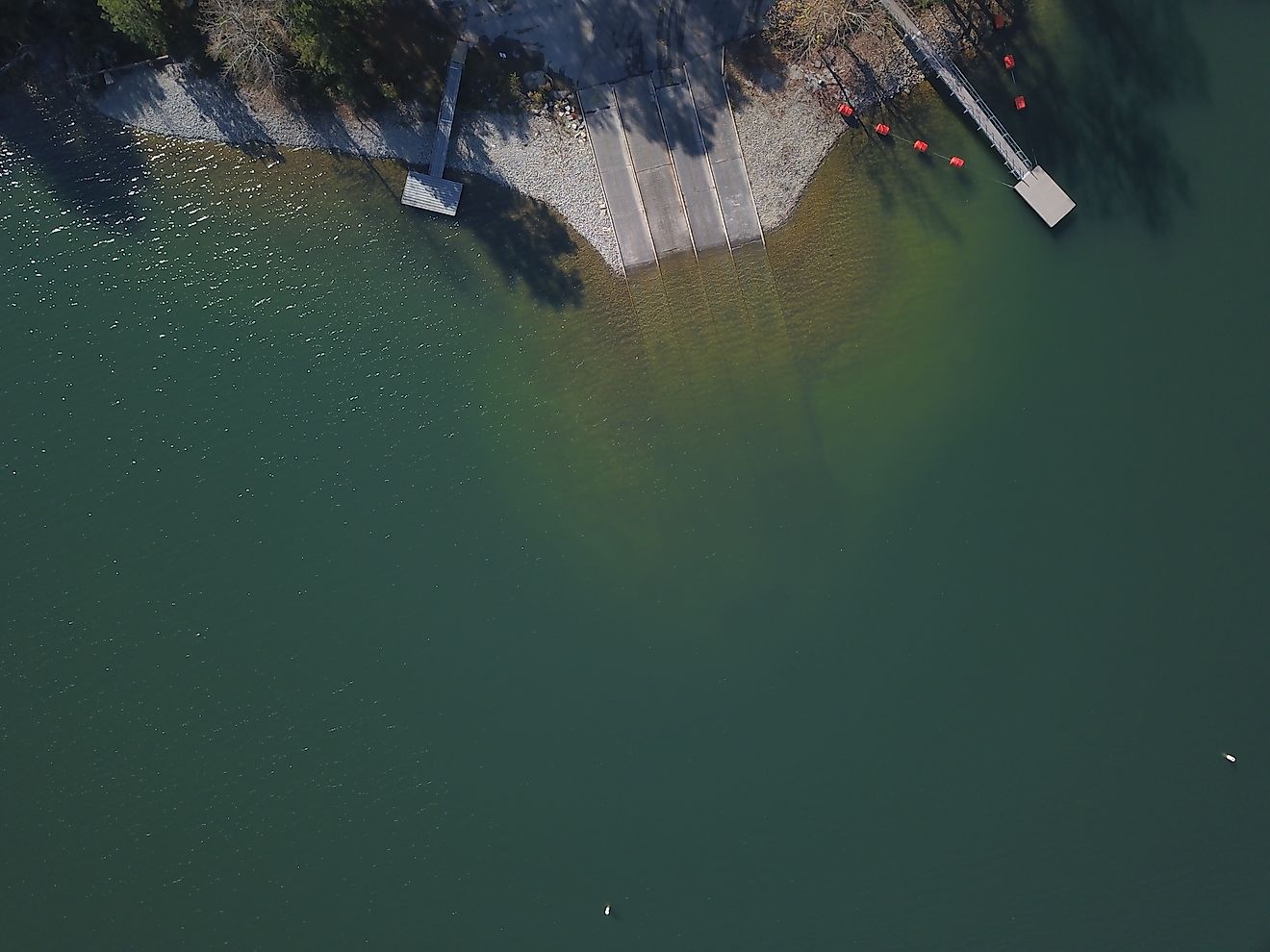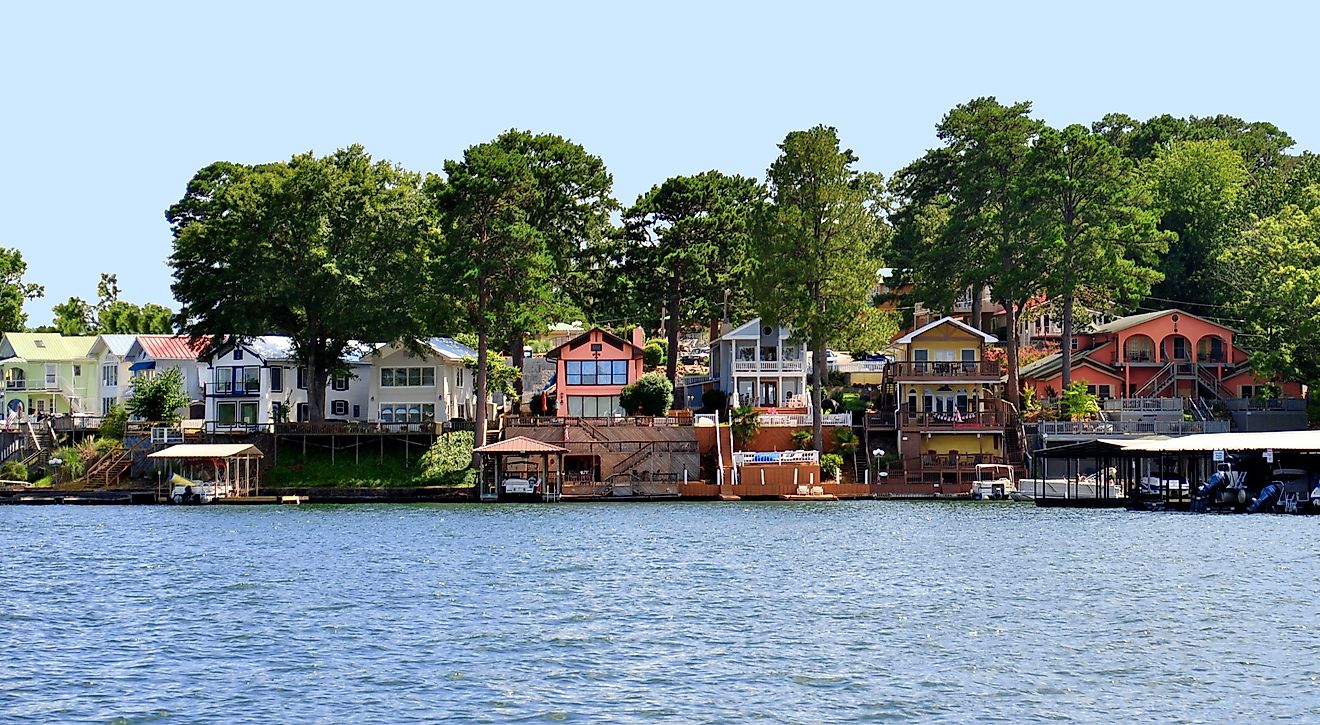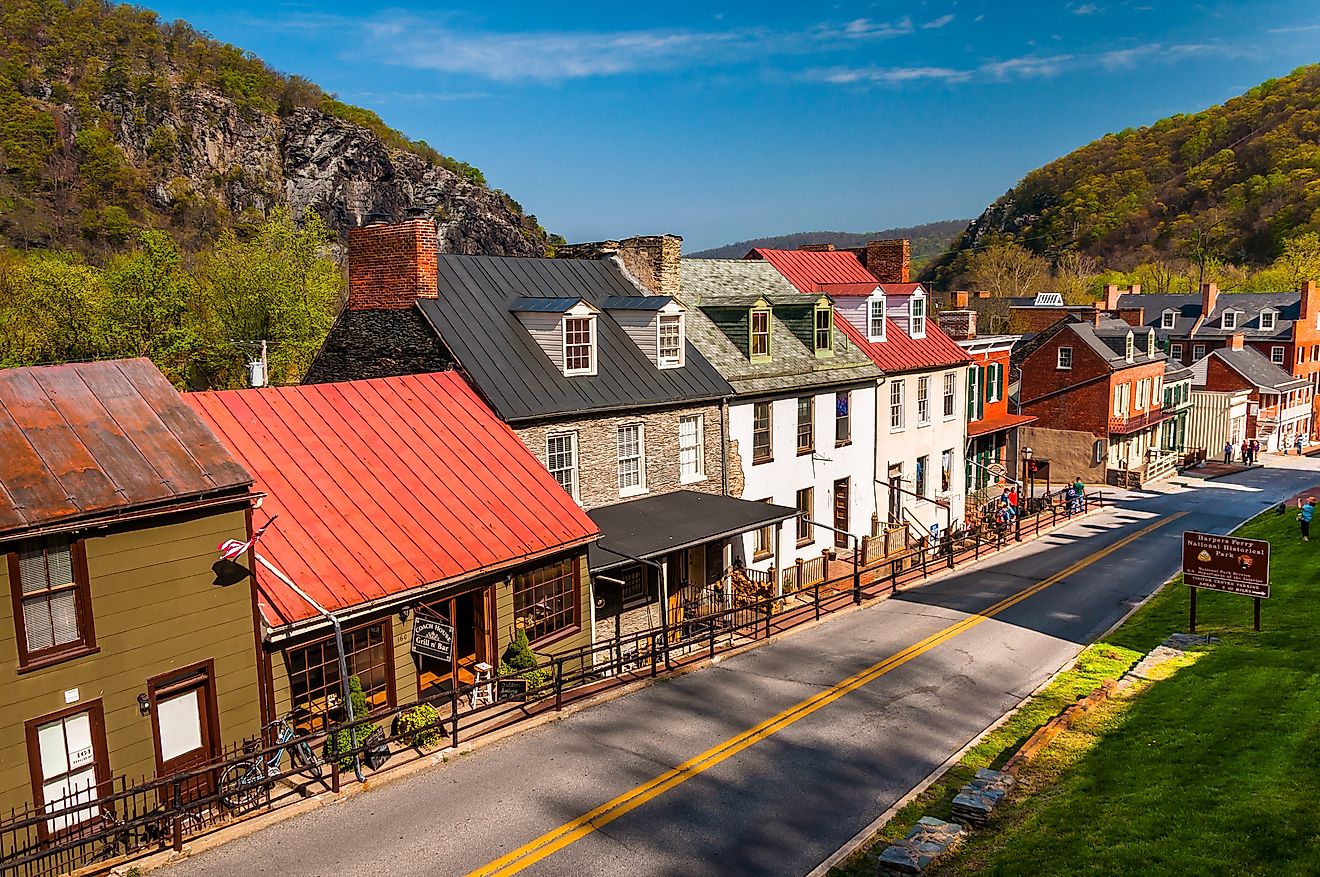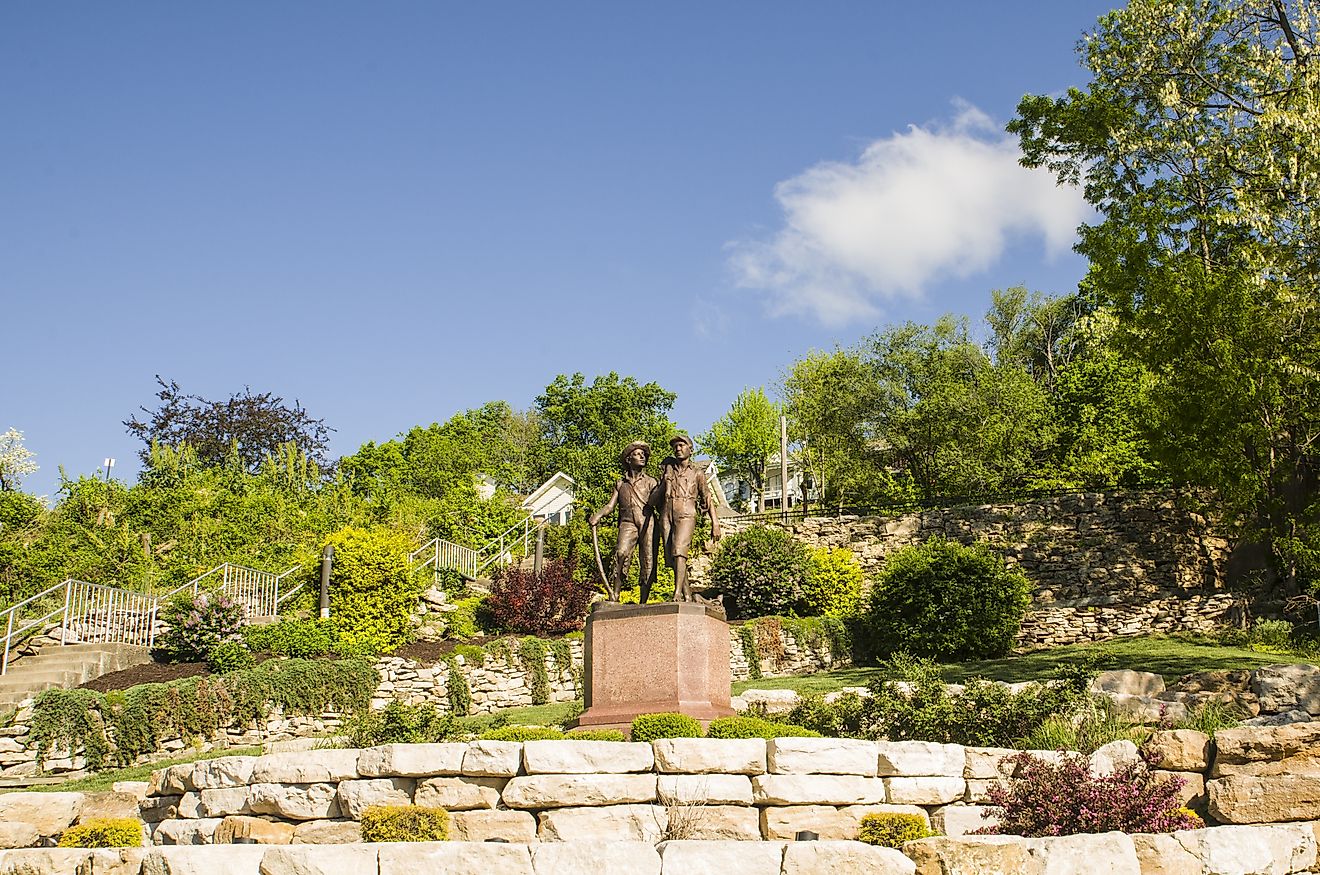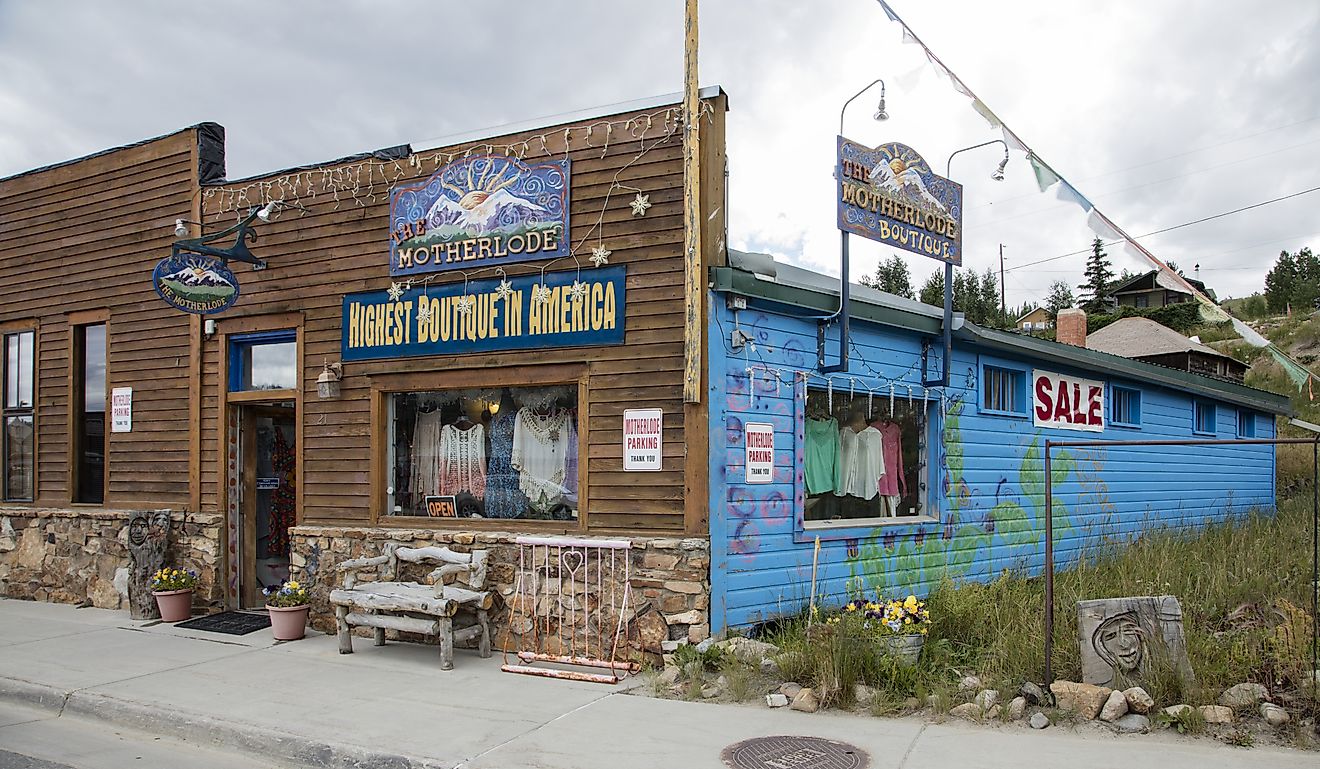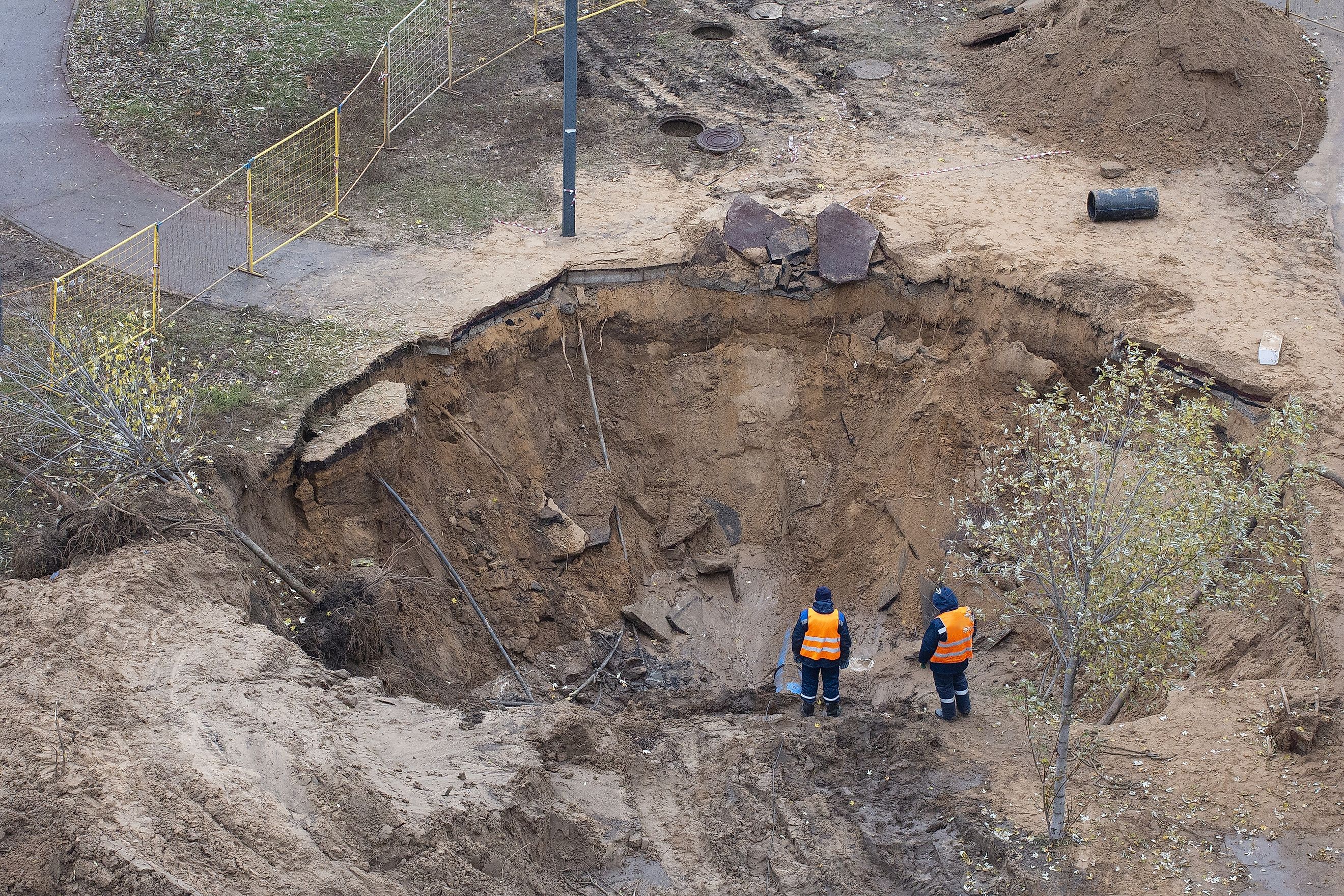
The Largest Sinkholes in America and the Towns They Swallowed
Sinkholes are some of nature’s most dramatic reminders that the ground beneath us is not always as stable as it seems. These sudden voids can appear without warning, devouring roads, fields, and even entire communities. Across the United States, some sinkholes have become infamous for their sheer size and the impact they had on the people living nearby. From small towns lost to the depths to vast craters that continue to expand, these geologic phenomena tell stories of changing landscapes, forgotten communities, and the raw power of nature.
What Causes Sinkholes?
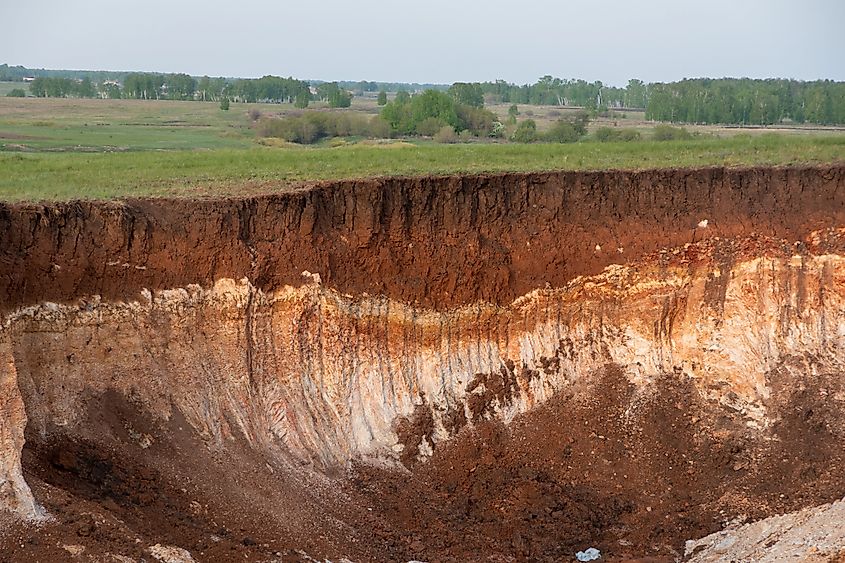
Before looking at the most notorious sinkholes and the towns they consumed, it helps to understand how they form. Sinkholes occur when the ground beneath the surface gives way due to the dissolution of soluble bedrock, such as limestone, gypsum, or salt. This process, called karstification, creates underground voids. When the surface layer can no longer support its weight, it collapses, leaving a hole.
Human activity can speed up this natural process. Mining, drilling, water overuse, and poor construction practices have all been known to trigger sinkholes. Heavy rains, hurricanes, and floods often provide the final push.
Bayou Corne Sinkhole, Louisiana
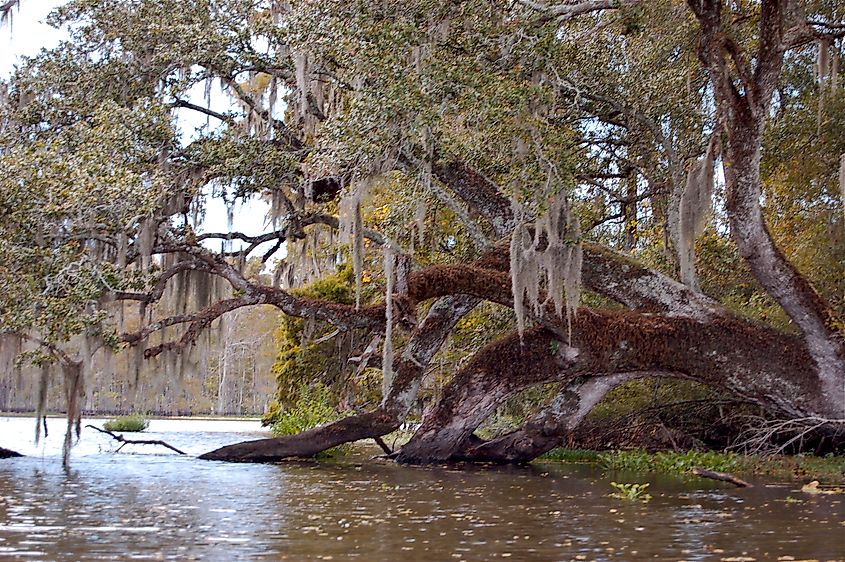
Along Bayou Corne, Louisiana. Editorial credit: jc.winkler via Wikimedia Commons
-
Size: Over 34 acres
-
Depth: Estimated 750 feet
-
First Noticed: 2012
-
Nearby Town: Bayou Corne, Louisiana
The Bayou Corne sinkhole is one of the largest and most infamous in the United States. In 2012, residents of the small Louisiana community began noticing mysterious bubbling in local waterways, strange tremors, and the smell of crude oil. Soon after, the ground opened up, creating a massive sinkhole that grew to over 34 acres.
The culprit was a collapsed underground salt dome operated by Texas Brine. The sinkhole swallowed trees, parts of the swamp, and threatened homes, forcing a mandatory evacuation. Most residents never returned. Today, the area is largely abandoned, a watery void surrounded by remnants of a once tight-knit community.
Winter Park Sinkhole, Florida
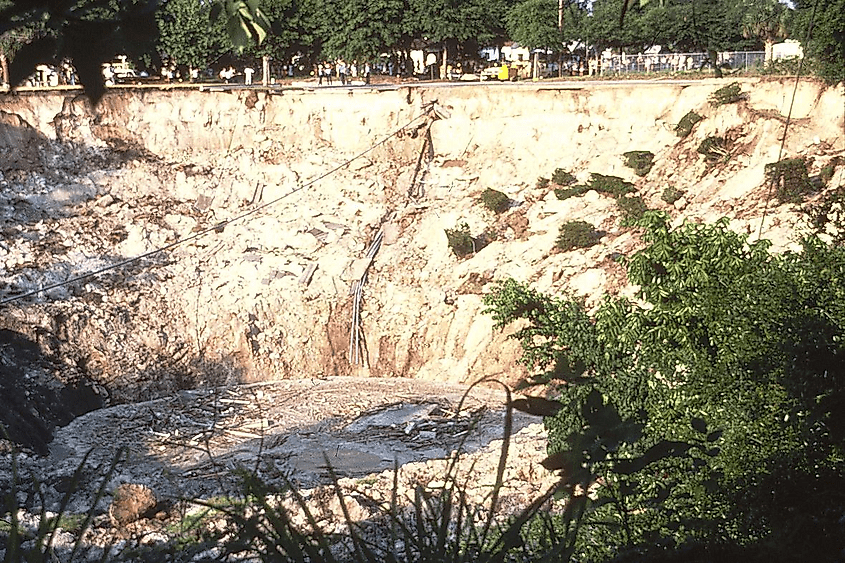
Winter Park Florida Sinkhole of 1981. Editorial credit: Anthony S. Navoy, USGS, anavoy@usgs.gov, Public domain, via Wikimedia Commons
-
Size: About 300 feet wide and 80 feet deep
-
First Appeared: 1981
-
Nearby Town: Winter Park, Florida
Florida is notorious for sinkholes, thanks to its porous limestone bedrock. One of the most famous is the Winter Park sinkhole, which opened suddenly in 1981 and consumed a residential neighborhood, a car dealership, and part of a public swimming pool.
The sinkhole attracted national attention, drawing crowds of onlookers who came to see what some called “Florida’s largest urban sinkhole.” Over time, it filled with water and was stabilized, becoming a pond surrounded by homes. The memory of the neighborhood it devoured, however, remains.
Lake Jackson Sinkhole, Florida
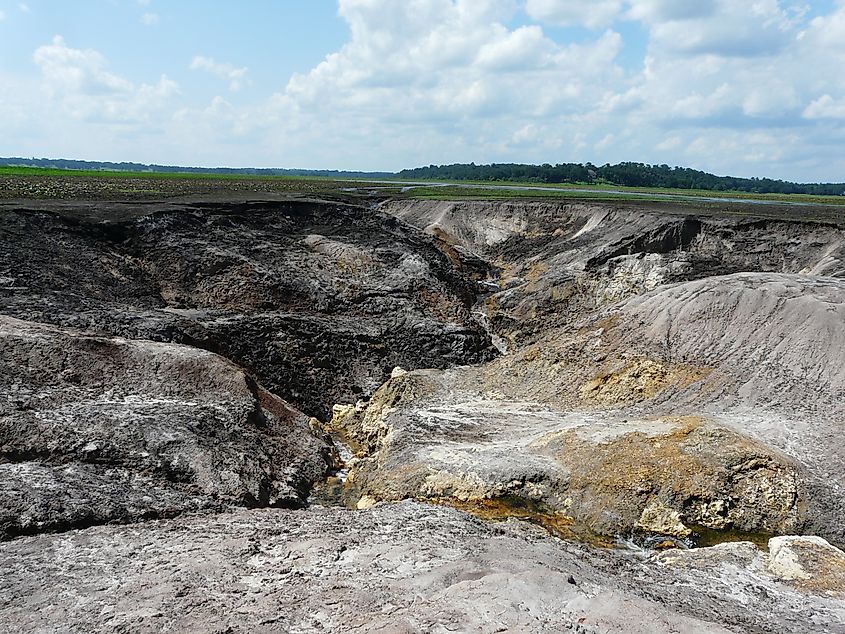
-
Size: Roughly 400 acres of drained lake
-
Depth: Variable
-
Nearby Town: Tallahassee, Florida
Unlike a single crater, the Lake Jackson sinkhole is part of a natural system of collapses that periodically drain the entire lake. These collapses have been documented since the 1800s. When they occur, the water disappears into underground channels, leaving behind dry lakebed and stranded boats.
The event has repeated several times, most recently in 2021. While not a traditional sinkhole swallowing a town, it has long affected the communities surrounding Tallahassee that depend on the lake for recreation and tourism.
Daisetta Sinkhole, Texas
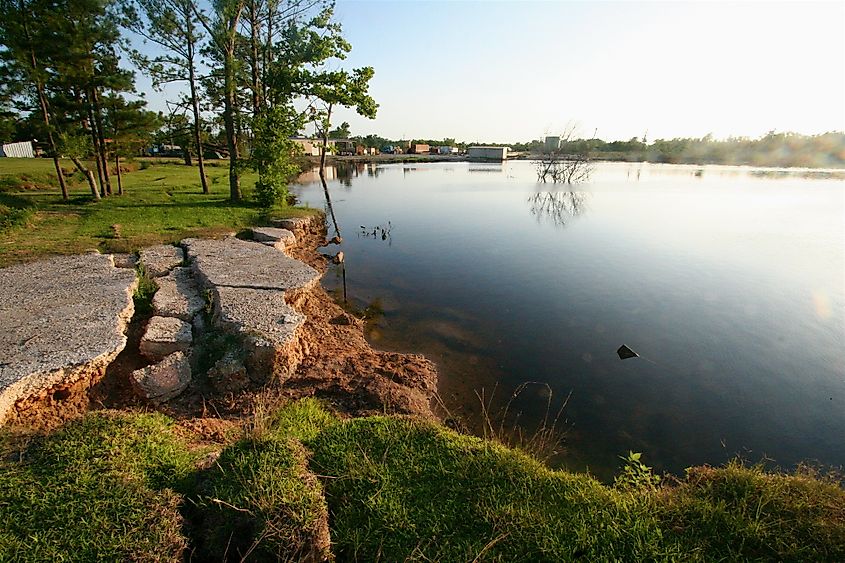
-
Size: About 900 feet across and over 260 feet deep
-
First Appeared: 2008
-
Nearby Town: Daisetta, Texas
The Daisetta sinkhole appeared overnight in a small East Texas town built on a salt dome. Residents woke to find a massive hole expanding rapidly, swallowing vehicles, oil field equipment, and threatening homes.
Over time, the sinkhole stabilized but remains a gaping wound in the earth. Locals call it “Sinkhole de Mayo,” and while the town still exists, the sinkhole’s presence has permanently altered its landscape and future growth.
Golly Hole, Alabama
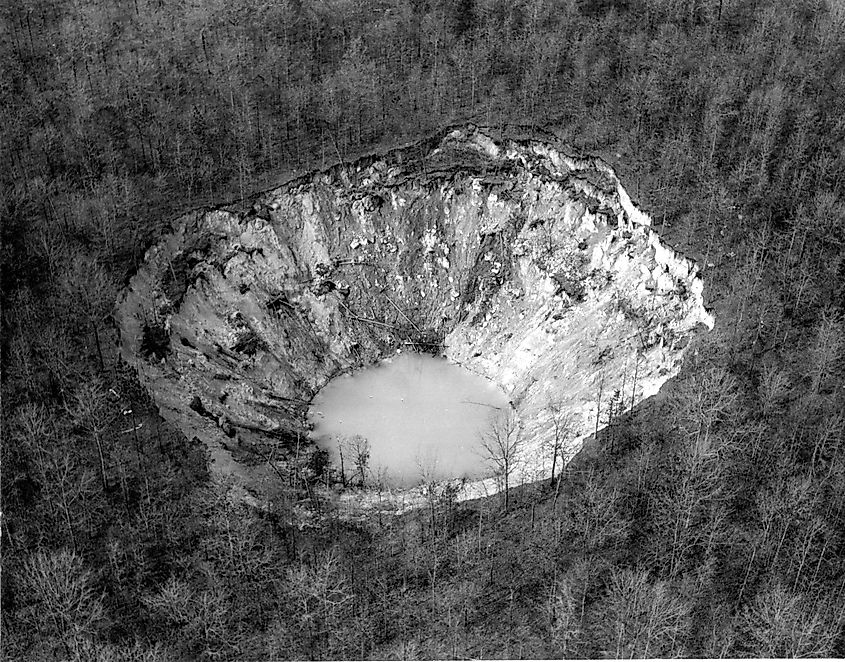
-
Diameter: About 325 feet wide
-
Depth: Nearly 180 feet deep
-
Location: Shelby County, Alabama
-
Year of Collapse: 1972
Golly Hole is one of the most dramatic sinkholes in the southeastern United States. Located near Calera in Shelby County, this massive chasm opened suddenly on December 18, 1972, after weeks of heavy rainfall. The collapse swallowed about 15 acres of forest and left behind a sheer-walled pit that stunned the local community.
The event caused the ground to roar like a thunderclap, and witnesses described trees vanishing as if the earth had inhaled them. No homes were lost, but the sudden appearance of a hole nearly the size of a football field sent shockwaves through rural Alabama. Golly Hole is a textbook example of a karst sinkhole, where acidic rainwater slowly dissolved the underlying limestone until the ground could no longer support its own weight.
Today, the sinkhole is largely hidden by regrown vegetation, but its legacy remains a reminder of Alabama’s porous geology. It has become an object of fascination for geologists and a point of local lore, often recounted as the day the earth opened without warning.
Bowling Green Corvette Museum Sinkhole, Kentucky

-
Size: 40 feet wide and 30 feet deep (originally, expanded later)
-
First Appeared: 2014
-
Nearby Town: Bowling Green, Kentucky
In 2014, a massive sinkhole opened beneath the National Corvette Museum in Bowling Green, Kentucky, swallowing eight prized cars, including rare and historic models. The dramatic incident, caught on security cameras, quickly became a viral sensation and drew worldwide attention. Cleanup and recovery efforts revealed the surprising scale of the collapse, as some vehicles were badly damaged or beyond repair.
Though not a town-wide disaster, this event demonstrated how sinkholes can disrupt both communities and cultural landmarks. Instead of hiding the damage, the museum chose to preserve part of the sinkhole as an exhibit, transforming a near-tragedy into an unexpected tourism boost.
Why Sinkholes Happen and How They Shape Communities
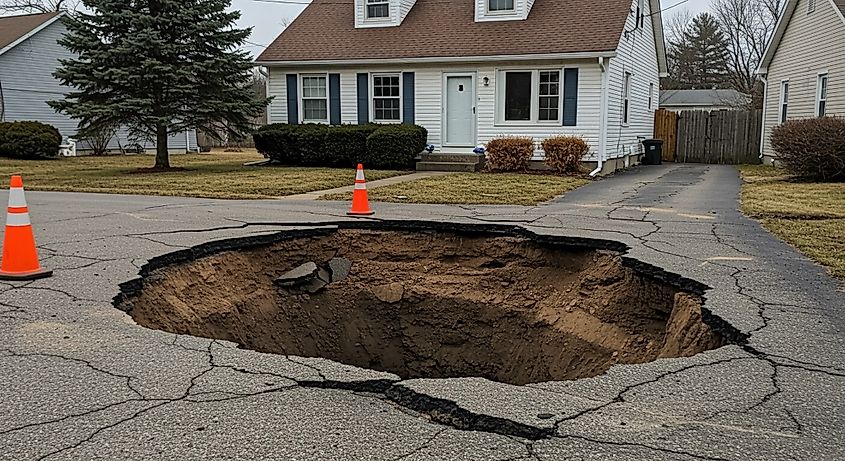
Sinkholes are most common in states with soft, soluble rock such as limestone, dolomite, or salt domes. Florida, Texas, Alabama, Kentucky, Missouri, and Louisiana are among the most vulnerable because water easily erodes their underlying geology. Heavy rainfall, hurricanes, and human activity like drilling or construction can speed up this natural process.
When a sinkhole forms, its impact goes far beyond the ground it swallows. Homes can collapse, roads may buckle, and families are often forced to leave their neighborhoods behind. Entire communities have been displaced, as seen in Bayou Corne, Louisiana. Property values in sinkhole-prone areas frequently drop, and insurance costs tend to rise.
Yet, not every story ends in ruin. Some places find creative ways to recover. The Winter Park sinkhole in Florida became a pond and a local landmark, while the National Corvette Museum in Kentucky turned its infamous sinkhole into a tourism draw.
Predicting when a sinkhole will form remains difficult, even with modern tools like ground-penetrating radar. Geologists can identify high-risk zones, but exact timing is elusive. Early warning signs may include cracks forming in walls, doors that suddenly stick, dips in the ground, or trees that begin to lean.
Lessons from the Depths
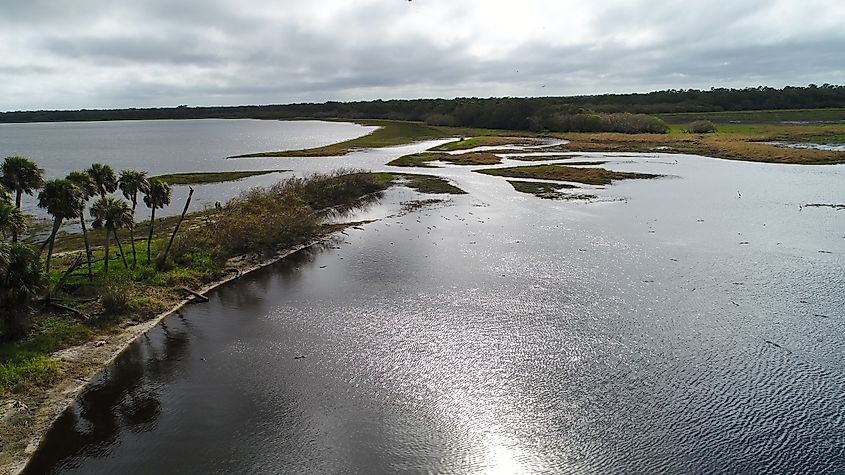
Sinkholes are a reminder that landscapes are constantly changing, often beneath our feet, and sometimes without warning. From the vast watery crater at Bayou Corne to the suburban streets of Winter Park, these sudden collapses leave lasting marks on both land and memory. They reshape communities, altering ecosystems, rerouting water flow, and transforming once-stable ground into something unpredictable. While some sinkholes evolve into peaceful ponds or quirky roadside attractions that draw curious visitors, others erase entire neighborhoods, leaving only cautionary tales behind. Their presence highlights the delicate balance between natural forces and human settlement across vulnerable regions.
Quick Reference Chart: Largest US Sinkholes and Their Impacted Towns
| Sinkhole | Location | Size (Width/Depth) | Year Noticed | Town Impacted |
|---|---|---|---|---|
| Bayou Corne | Louisiana | 34+ acres / ~750 ft deep | 2012 | Bayou Corne |
| Winter Park | Florida | 350 ft wide / 75 ft deep | 1981 | Winter Park |
| Lake Jackson | Florida | 400-acre lake drained | 1800s–2021 | Tallahassee |
| Daisetta | Texas | 900 ft wide / 260 ft deep | 2008 | Daisetta |
| Corvette Museum | Kentucky | 40 ft wide / 30 ft deep | 2014 | Bowling Green |
| Golly Hole | Alabama | 325 ft wide / 180 ft deep | 1972 | Shelby County |
Q&A: Sinkholes in America
Which state has the most sinkholes?
Florida has the highest number of sinkholes due to its porous limestone foundation and frequent heavy rains.
Can sinkholes be prevented?
Total prevention is difficult, but proper water management, monitoring of old mines, and responsible construction can reduce risk.
Are sinkholes always natural?
No. Many are caused or worsened by human activity such as drilling, mining, or ruptured water lines.
What happens to swallowed towns?
Depending on the extent of the damage, some towns rebuild, while others, like Bayou Corne, are permanently abandoned.
Are sinkholes dangerous for travelers?
Not usually, but if visiting a known sinkhole area, stay aware of posted warnings and avoid restricted zones.
